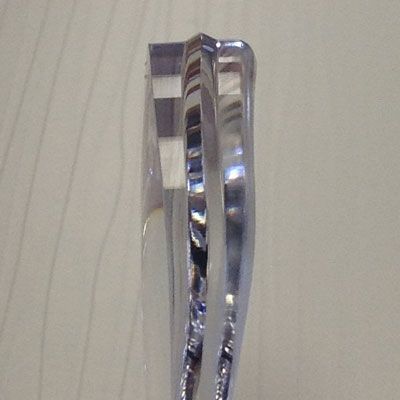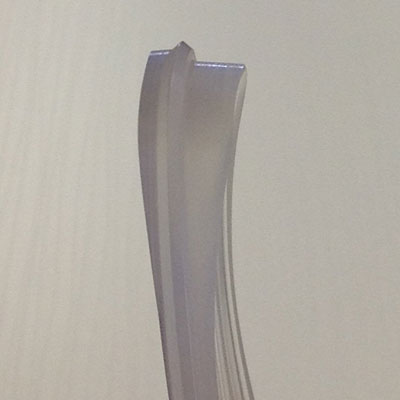How many zyl frames do you dispense on a daily basis? Is that number more than it's been in the past few years? You better believe it is! In case you have missed the trend, zyl frames are hot, they've been redesigned with much better bridge designs and as such, you can now appropriately fit someone in a zyl frame who has a petite bridge, or a flat bridge, or even those high full cheeks, just by selecting the proper bridge design. We have universal fit bridges, Asian fit bridges, and alternative fit bridges as options we hadn't even dreamed of 10 years ago. While there are many choices within the zyl family's bridges that allow for a better fitting frame, this article isn't about bridges, it is about the one thing you might be overlooking that will negate a great bridge fit.
The Art of Bevel Placement
How many jobs have you dispensed where it looked like the lenses "stretched" the frame out? What do you do in that moment? Warm the bridge and try to increase the face form? Round the temples in to try to get them to even touch the patient's head? Tighten the arc of the temples behind the ears to try to get them to stay in place? What if you didn't have to do any of those things and the job you ordered from the lab came back with the frame looking as great as it did on the frame board? Want to know the secret?
Bevel placement.
So, you take all of the right precautions, you order that -6.00 sph, OU Rx in a high index product with anti-reflective coating and you choose a zyl frame that fits the patient perfectly and that is thick enough to help camouflage the edge thickness. And what comes back from the lab looks a bit like this:

Why would that be? Because the lab, working in good faith, has placed the bevel near the front of the lens, thus leaving the excess lens to hang out of the back of the frame. Normally this is a good thing, as the frame would camouflage the excess nicely, and the lab would then recommend rolling off those edges to make the lenses look very nice, however, the lab is missing a bit of information.
The excess thickness is the culprit here. The excess thickness will cause the inside of the frame eyewire to be wider than the outside of the frame eyewire. You will see this happening when you mount the lenses and the temples of the frame now are much wider than they were prior to mounting the lenses. A bevel placed too near the front of the lens will cause too much excess behind the bevel which interferes with the back of the eyewire which will cause the temples to flare out, which ultimately leads to a patient who returns to your office again and again to have their glasses tightened up.

It is the optician's job to predict these issues and to communicate with the lab to step the bevel off to ensure that the temples don't flare out on the finished product. This can be done in a number of ways, however two of the most common are the traditional "Step" bevel which cuts the excess lens behind the bevel in slightly from that above the bevel, and another option is to request the lab move the bevel back from the front of the lens, this will result in a bit of the lens coming out the front of the frame, but by splitting the edge thickness you will no longer have just the inside of the eyewire affected, the outside and the inside of the eyewire will be affected equally as the lens thickness will catch both edges.
If in doubt prior to ordering a job, it is always a great idea to call your lab and speak with them about the bevel placement options before processing the order. The lab might like to have the frame to ensure a good fit if you are among the many opticians who order their jobs with the aid of a digital frame tracer. Or if you're the one edging the lenses, please keep these tips in mind as your patient knows the difference between a frame that fits properly and one that doesn't. Always remember that a happy patient is worth their weight in gold and we must not overlook these small details when crafting their eyewear, fit is important to them and proper bevel placement helps craft great patient outcomes!

Johnna Dukes, ABOC is currently the owner and operator of an optical boutique, with experience in both the private practice sector as well as the retail chain setting. She has a wide range of experience varying from optical support staff to dispensary management to practice ownership. She lives in Okoboji, Iowa.













